USDA to count all 50 states!
This just in from our resident hortistician Dr. Marvin Miller, on big, big news from the USDA regarding the annual Floriculture Crops Summary. Needless to say, he's like a kid at Christmas:
The National Agricultural Statistics Service of the U.S. Department of Agriculture (USDA/NASS) has reported some major changes that will soon be delivering a new survey coming to a mailbox near you.
NASS has decided to collect data for the Floriculture Crops Summary from growers in all 50 states on an annual basis beginning with the report coming out next spring based on 2021 production and sales.
In the largest single expansion of data in the report’s history, NASS will provide data separately for 28 states and then group the remaining 22 states as an “all other states” subtotal, thereby providing the total for the entire country. NASS had been collecting annual data on 17 states; before that it was 15 and before that 36. But we’ve never had an annual survey of all 50 states.
The 28 states that will be individually enumerated are Alabama, Alaska, California, Connecticut, Colorado, Florida, Georgia, Hawaii, Illinois, Indiana, Iowa, Maryland, Massachusetts, Michigan, Minnesota, New Jersey, New York, North Carolina, Ohio, Oregon, Pennsylvania, South Carolina, Tennessee, Texas, Utah, Virginia, Washington, and Wisconsin.
These state breakouts will be across the cut flower, potted flowering plant, foliage plant, bedding/garden plant, cut cultivated greens and plant propagative materials categories. And for the first time in this report sales data will be reported as retail sales, wholesale sales and total sales, as respondents report their data, rather than converting all sales to a wholesale sales equivalent, as has been done in the past.
NASS will also be increasing the number of crops separately enumerated in the annual survey. Added to the bedding/garden plants data will be separate tallies for calibrachoa, geraniums produced from seeds or plugs, interspecific hybrid impatiens (NASS was already collecting data for New Guinea impatiens and "impatiens other," which is essentially I. walleriana), and vinca (catharanthus) among the flowering annuals. These will be added to data for begonias, geraniums produced from vegetative cuttings, marigolds, pansies/violas and petunias, as well as the already-mentioned two categories of impatiens.
Vegetable-type bedding plants will be expanded to collect separate data for tomatoes, peppers and other vegetable-type bedding plants. Data for the sales of herbs will also be collected for the first time.
The perennial category—which was already represented by hardy/garden chrysanthemums, daylilies, hardy/garden ferns, hostas and peonies—will be expanded to include separate tallies for lisanthus, lavender, salvia (perennial) and sedum.
Joining the ranks of separately enumerated potted flowering plants—which already included florist chrysanthemums, Easter lilies, orchids (all), poinsettias, potted florist roses and potted spring flowering bulbs—will be begonia, hibiscus (potted), hydrangeas and other lilies.
For the first time ever, the foliage plant category will be expanded to include individual sums for bromeliad, cacti and succulents, dracaena, ferns (tropical fern potted) and palms.
The cut flower list already included separate totals for pompon chrysanthemum, dahlia, gerbera daisy, gladioli, iris, lilies (all), orchids (all), peony, roses (all), snapdragon, sunflower and tulips. The list will be augmented to include aster, delphinium/larkspur, lisianthus, protea and wax flowers.
USDA plans to mail questionnaires to growers in all 50 states at the end of December and continue data collection through the end of February. The Floriculture Crops: 2021 Summary will be issued on May 25, 2022.

Why 50 now?
“I’ve been arguing for this for years,” Marvin told me after the announcement, which makes one wonder why they're finally expanding to 50 states.
Marvin explained that NASS is planning on expanding ALL their agriculture commodity crop surveys (of which they do many) to 50 states, not just ours. “We’re the guinea pigs," he said with a chuckle.
Part of the reason is efficiency. When they do the census every five years, it’s a big effort to gear up to talk to people they haven’t contacted for five years, says Marvin—checking addresses, have they moved, are they still in business. “It’s a big issue. They spent a lot of time list-building and modifying and correcting and updating. If they do it on an annual basis, they may offset a lot of that extra staff time.”
A second reason is accuracy and usefulness of the data over time. Firms throughout agriculture operate in more than one state. The challenge when they do the Census of Ag every five years, they’re capturing all 50 states, but when they do the annual summary, they’re currently only doing 17. Because of that, the numbers fluctuate and “it’s hard to get a sense whether the industry is growing or declining,” says Marvin.
So watch for your survey, fill it out and help Marvin (and the USDA NASS) know whether our industry is growing and by how much.

Fall River Ridge Recap
In case you hit the “Ack, it’s spam!” button instead of opening it as you should have back when I sent the special edition newsletter, here is a quick recap of the 2021 Fall River Ridge Report (brought to you by my friends at Sun Gro, makers of the finest free-range, vine-ripened peat moss and potting mixes).
Cutting to the chase, the Fall River Ridge Report showed 77.5% of homes (276 out of 356) had done some form of fall decorating—up an impressive 11.5 percentage points over 2020! That’s the second-highest result ever (behind 2010’s 81%) and well above the 11-year average of 70%. That enthusiasm for outdoor decorating jibes nicely with the Spring River Ridge Report, which was up 5 points over 2020. All in all, 2021 was a positive year for my neighbors!
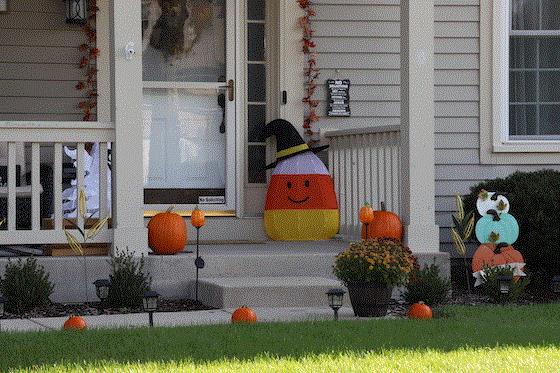
As for how they decorated, flowers (our favorite category) were purchased by 35.5% of those who decorated—up 1.5 points from 2020 and the highest number in at least 11 years. Agricultural products—pumpkins, corn stalks, strawbales, Indian corn, etc.—were used by 67% of those who decorated, down considerably from 2020 (79%), but above the 11-year average of 65%. And plastic/artificial décor is, of course, the No. 1 category, at 78% of decorators choosing some form of skeleton, ghost, ghoul, cemetery plot or other horror to scare the kiddos. That number has remained consistent for most of the survey.
To see all the data, plus photos, click HERE.

My trip to Tucson
Last week, I spent three days in Arizona, my first time to the state in 15 or 20 years, and my first time in Tucson. Lovely, warm in the day and cool at night, surrounded by pretty, rugged mountains and lots of saguaro cactus (including cell towers made to look like cactus, but I was only fooled once). It’s greener on the ground than it looks from the air, although folks tend to landscape with about six local plants instead of taking advantage of the plethora of species that can do well in the climate, as I saw when I visited the region’s premier retailer, Mesquite Valley Growers Nursery, owned by my friends Tom Birt and Cathy Bishop (more on that visit in a minute).
My primary purpose was attending the annual meeting of the National Greenhouse Manufacturer’s Association (NGMA), of which I am a board member (proof of how much I love greenhouses). We spent two mornings in education sessions and two afternoons on our own. Tuesday p.m. is when I visited the garden center; on Monday afternoon, I'd arranged a private tour of the University of Arizona’s Controlled Environment Agriculture Center (CEAC) with director Dr. Murat Kacira and former director Dr. Gene Giacomelli. That solo visit morphed into a group of about 15 NGMA members joining me and the folks at CEAC could not have been happier or more gracious.
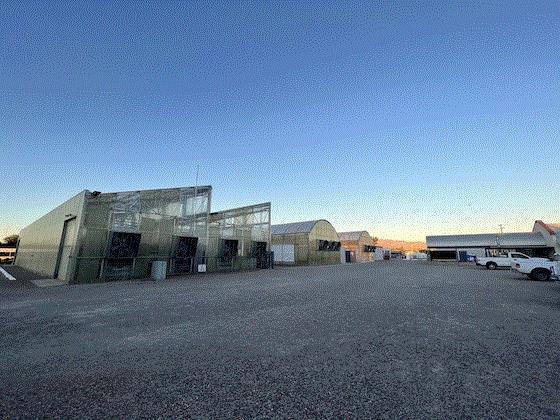
The CEAC at the University of Arizona.
Also happy were all the grad students who got to show off their research projects. You talk about smart and inspiring! For instance, we met a young man who was headed for med school, then discovered Biomechanical Engineering as a more interesting and grassroots way to positively impact human health. Another young man with a background in math and physics is now adding CEA to his long résumé. And we all loved the young woman who told the group she knew she wanted to be a farmer at age 3 after she saw a calf born and by age 15 she had decided she wanted to be a farmer on Mars. She’s pursuing her dreams in CEAC’s Mars Lunar Greenhouse, where they're working on growing food just as an astronaut would do in space.
As CEAC’s Dr. Triston Hooks said during a presentation to the NGMA the next day, controlled-environment agriculture “captures the imagination of the next generation.” Yes, it does!
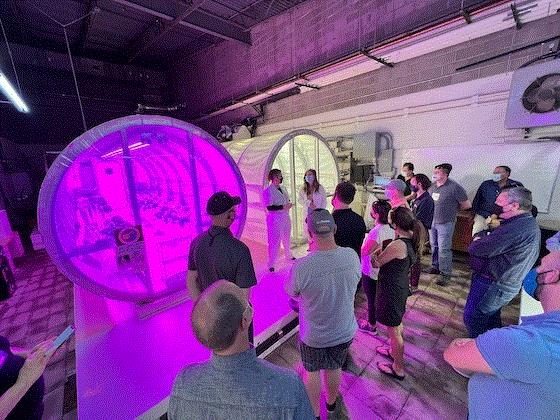
Future Mars farmers Megan Kane and Tam Friedman take us on an otherworldly tour of growing in space.
NGMA is busy, too, but here on earth. One major initiative we'll be working on is informing greenhouse owners (that's you!) how newly adopted energy codes could impact your current and future greenhouse structures. The new codes are much more strict than before—basically treating greenhouse glazing as if it was a skylight or window. But, thankfully, codes are just that—codes, not laws or regulations—so NGMA will be working on greenhouse standards to help guide code officials in sensible decision-making.

What they’re studying at CEAC
The Mars Lunar Greenhouse was one of the research areas they showed us; another was their vertical farm, which was built in 2018 from an old storage building. It’s small—two chambers, each with two stacks of hydroponic tables three layers high—but they can mimic any condition needed to test vertical farming theories, such as plant response-based environmental control to enhance resource-use efficiency (which master's student KC Shasteen is explaining to us, below). KC is another CEAC student interested in growing food in space.
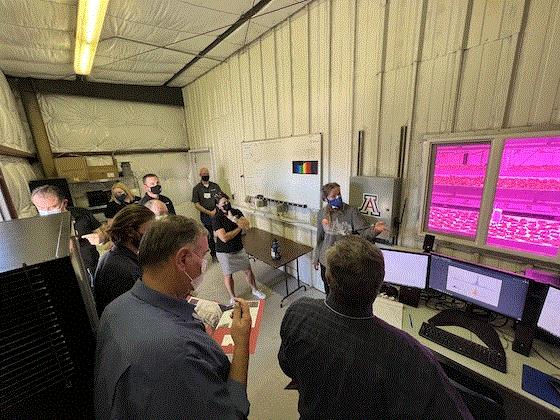
I was intrigued to see a test of “quantum dots” technology via a new product called UbiGro film. I’ve written a bit about this, most recently a small test of the stuff at Plantpeddler in Iowa. UbiGro is said to absorb sunlight and then shift some of the ultraviolet and blue waves over toward the red spectrum, making it more usable for the plants.
UbiGro is a product of the company UbiQD, which stands for “ubiquitous quantum dots.” They’ve licensed the technology from the developers, Los Alamos National Laboratory and M.I.T. CEAC is growing a trial of tomatoes under the film (along with a control of tomatoes under regular poly) to determine the best wavelength of light to maximize yield.
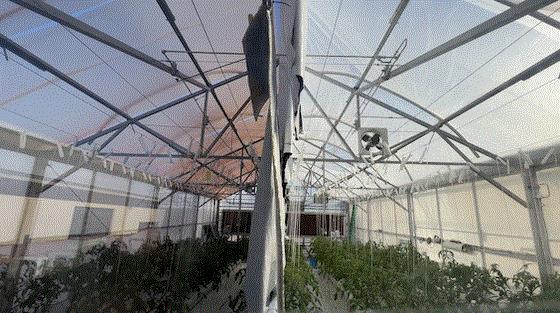
Quantum dot film on the left, vs. the control on the right. Will it boost yield? They'll find out.
There’s a lot more going on at CEAC than I can begin to cover here. For instance, I heard the term “mechatronics” (the melding of crop mechanization with computers and sensors); GLASE (Greenhouse Lighting And System Engineering), LAMP (Lighting Approaches to Maximize Profits), ePAR (far red and UV-A light) and more, all of which made me realize I’ve got more researching and reporting to do!

At Mesquite Valley
A bit more down to earth was my visit the next afternoon to Mesquite Valley Growers Nursery, where Tom Birt and his son Nathan gave me the grand tour.
It’s a shame Mesquite Valley is so far away from most of America, as it’s one of our top independent garden centers, not only financially (they’ll do almost $11 million in sales in 2021), but also aesthetically. Not that native son Tom would want to do business anyplace else. Nor would his ever-present cowboy hat be quite at home any place else.

The impressive façade lets you know you're in for a treat.
I’ll sum up the quality of Mesquite Valley this way: Tom and Cathy have incorporated the best garden center ideas from around the world—literally: They have traveled to 16 International Garden Center Association tours, bringing back ideas and inspiration from the very best garden centers in France, Germany, Ireland, Japan, Australia, South Africa, Denmark, Italy, the UK and many more countries.
Having traveled with them on eight of those IGCA tours, I can spot the end results of this destination garden center: the impactful entrance; the “decompression zone” that relaxes guests upon arrival; the fabulous restrooms just off to the right (it’s a long drive to Tucson!); the unique and high-quality retail fixturing; the tremendous selection of garden-oriented gifts; the grand, soaring greenhouses with curved trusses; the garden paths that bend just out of sight, leading you further into the nursery … it’s the sort of place you walk around … and then walk ‘round it again, to see what you missed. “Poke-around factor” is what my wife calls it, and it does make you want to linger and just “poke around” for an hour or two as only the very best garden centers do.
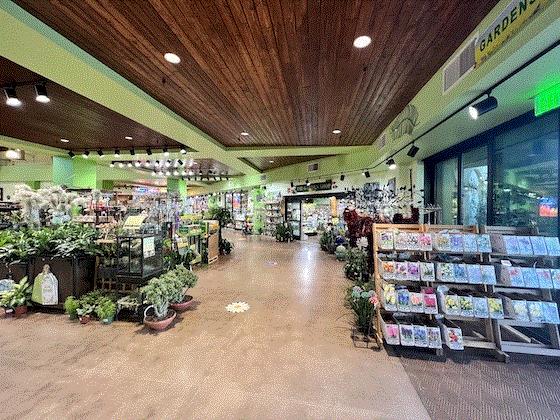
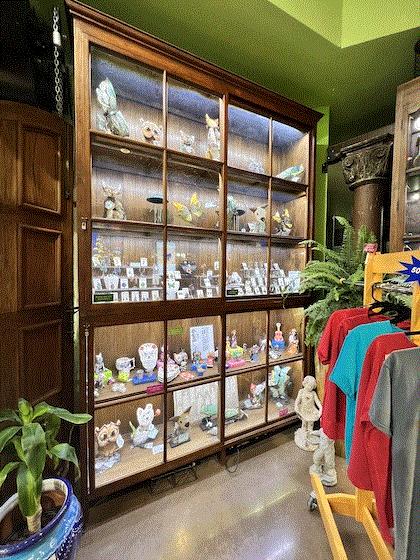
Tom started as a grower and is still a grower, and his love of plants comes through. He grows what others don’t: the hard stuff, the picky stuff, the slow stuff, the expensive-to-produce stuff, which gives his retail customers a tremendous selection for the desert. I was amazed at how much you can grow in Tucson: bougainvillea, tropical foliage and shrubs I grew in Florida; flowering vines of every description … loads of greenery and color! And cactus, of course—I even brought a baby saguaro back to Chicago.
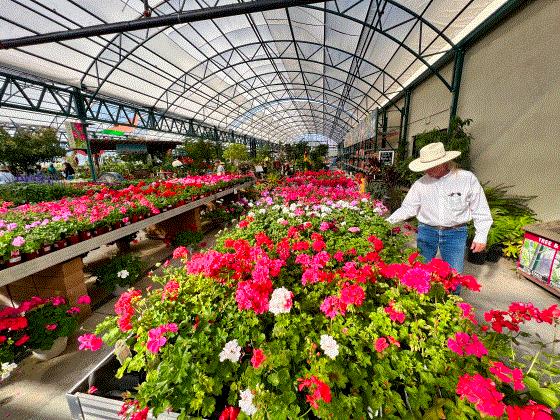
Houseplants, too. They’re finishing up a 9,000 sq. ft. greenhouse (below) dedicated to foliage and tropicals. “We had a fairly nice houseplant area, but I wanted to do this and expand it to make it really, really spectacular,” he told Jen Polanz when she asked him about it for Green Profit.
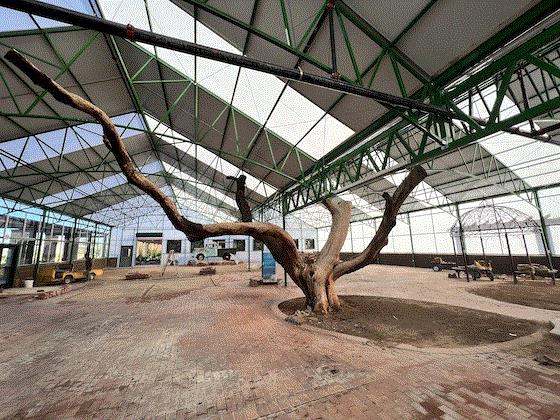
If you get to Arizona, or even close, put Tucson and Mesquite Valley Growers Nursery on your map for a day trip. You won’t be disappointed!
Oh, one more hint about how they operate: no website. In this day and age? Amazing! Tom simply says they let their customers do the bragging about them on social media.

Are Black Friday poinsettias still a thing?
Maybe I should ask if Black Friday is still a thing ...?
As I shopped around town this past weekend, I was seeing poinsettias at retail—Home Depot and Menards, namely. Which got me to thinking: Are any of the chains still doing loss-leader Black Friday poinsettia promotions?
To find out, I went to my main source: BlackFriday.com, which publishes all the Black Friday newspaper flyers they can get their hands on.
First up, Walmart’s 20-page flyer. No poinsettia on the cover; in fact, no poinsettia anywhere. The first nine pages are dedicated to electronics, which anyone will tell you has been the gift of the season for many seasons.
Home Depot didn’t disappoint; right at the top of their 36-page flyer is a 1.25-qt. poinsettia for $1.98 (normally $4.98). Interestingly, it's designed to look like it’s paperclipped on top of a bunch of power tool ads, as if the wife was reminding the husband to not forget her when he’s shopping for a new drill. By the way, this is not a one-day sale; prices are good November 14 to December 1 (while supplies last).

Lastly, Lowe’s, which also featured a poinsettia on the cover, but this time among other Christmas décor items and appliances. Two dollars for a 1 qt., regularly $5.99. Prices good 11/26 through 12/2.

Got insider knowledge of how the chains are thinking about poinsettias this Christmas and want to share? Email me at beytes@growertalks.com.

Finally I …

'Tis the season! This week, Jen Zurko and I are off to the annual N.G. Heimos poinsettia trials, down near St. Louis. It’s our one chance of the year to see all the new and old varieties from all the poinsettia breeders in one objective place. Stay tuned for our coverage and maybe even a video!
Finally II ...
Speaking of poinsettias, I warned you’d I’d be writing about painted, dyed and glittered E. pulcherrima, and now I am! If you're painting any yet that you want to brag about, send me some good photos. If they meet my high standards of artistry and wow-factor, I’ll feature them in an upcoming issue of Acres Online.
If, however, you think they are an abomination and a crime against nature, well, we can talk about that, too. Just email me at beytes@growertalks.com.
See you next time!

Chris Beytes
Editor
GrowerTalks and Green Profit
This e-mail received by 25,238 loyal readers!
Thanks to my loyal sponsors, who help me reach the 25,238 readers of Acres Online in 66 countries. Want to be one of them (a sponsor, that is)? Give Paul Black a shout and he'll hook you up.